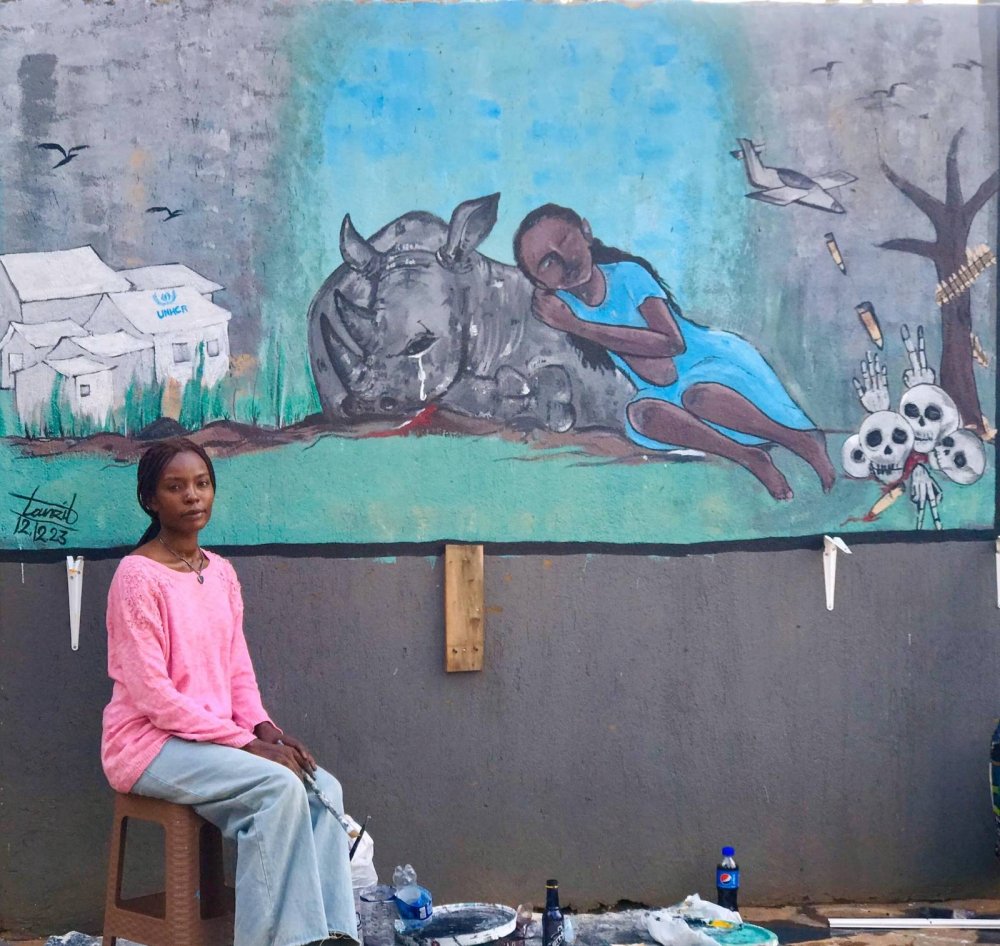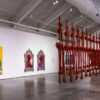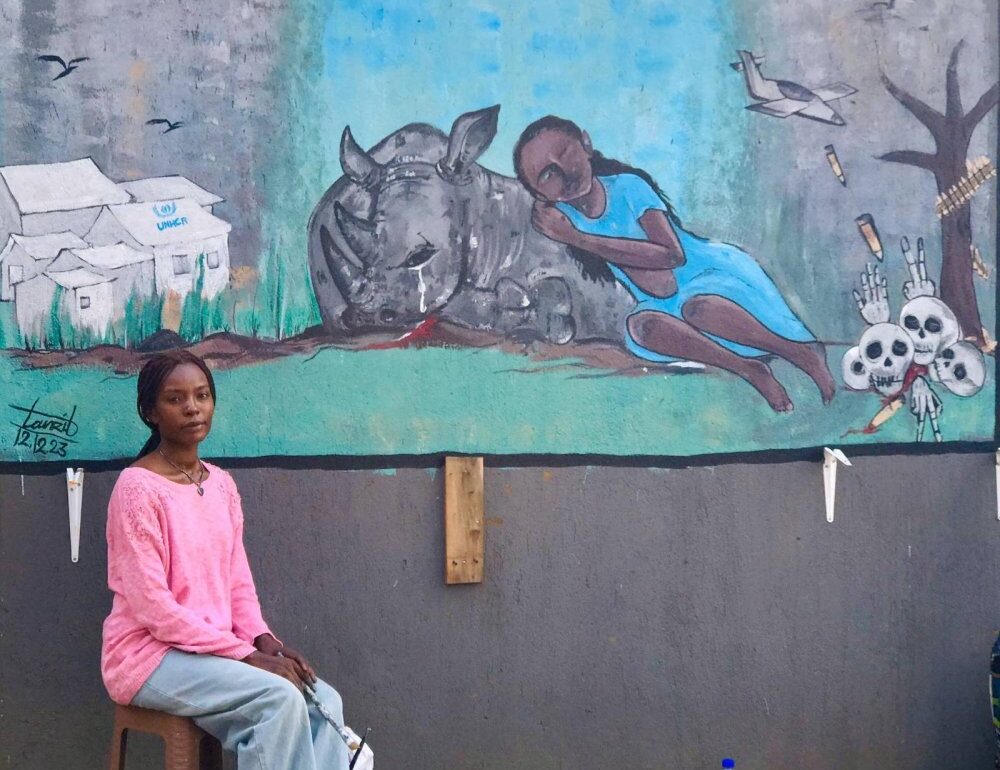For us, the survivors, it is not about what we lost. It is about what we didn’t lose: hope and resilience.
It has been 493 days since war broke out in Sudan. While this war has been tearing us apart as Sudanese people, the world has remained silent.
Sixteen months ago, the Sudanese people woke up to the sound of horror—gunfire and heavy shelling. Soon after, we became numbers and statistics: 9.9 million people have been internally displaced across 18 states, two million people became refugees, and hundreds of rape cases have been reported. The World Food Programme now warns of famine by the end of this year, and over 80% of hospitals are out of service, according to the latest Ministry of Health report.
How the war began
On April 15, 2023, the two warlords, General Abdel Fattah al-Burhan, Commander of the Sudanese Armed Forces (SAF), and Mohamed Hamdan Dagalo (Hemedti), the Commander of the Rapid Support Forces (RSF), hurled accusations at each other in a series of TV interviews. The conflict between the two war criminals quickly escalated into a full-blown war.
When the war broke out, I was out of the country, having traveled to spend Ramadan with my family. However, as people began fleeing to safer cities and neighboring countries, my mother, sister, and I joined war response rooms and started organizing basic humanitarian supplies to help those crossing into Egypt.
It was painful, shocking, and hard to believe. We hoped and prayed that the war would end soon. That hasn’t happened yet. Instead, the war has shattered countless hopes. For the majority of Sudanese inside and outside the country, an unknown fate has become a living hell. However, the Sudanese people are still resilient, wanting to survive and thrive.
A portrait of an artist
On July 22, 2024, I was invited to facilitate workshops at a Sudanese youth conference. Many activists had gathered to speak about how the war in Sudan impacted them, as well as their own work, war response efforts, and calls to action. There, I met Tanzeel, a 27-year-old artist from El Fasher, Darfur, who shared her powerful story of pain and strength. She simply said, “Art saved me.”

Courtesy of Author
I asked her how art had saved her life: “I was an introverted kid. I found refuge in art and drawing in high school when an art teacher noticed my talent. I wanted to study art, but my family was against it. My father refused, saying, ‘What kind of job will you get if you study art?’ I let them choose for me, and they chose public health—a major that would secure me a good job after graduation. I accepted because I didn’t know how to rebel against them.
I moved to Khartoum with my family—my mother, two sisters, and two brothers—and began studying public health. I didn’t enjoy it; I felt lost. So, I started attending artists’ gatherings and joined a community of Sudanese artists, who worked on art projects together.
In 2017, I graduated and returned to El Fasher in North Darfur to do my obligatory national service, for which I undertook an internship with Oxfam and UNICEF.
By the end of 2018, the revolution started. I couldn’t join the protests in El Fasher. My family didn’t approve because state brutality is usually doubled in El Fasher. The order is ‘shoot to kill’ from the first minute. El Fasher is not like Khartoum; if they fire one bullet in Khartoum, it’s five bullets in El Fasher. But I couldn’t just sit idly by. I started helping the resistance committees and protest organizers by designing posters and brochures and printing them secretly with my father’s printer.
One day, while visiting relatives, we heard heavy gunfire in the market. I learned that 14 kids had been shot dead. I couldn’t stay idle anymore. I was so angry that I went to the streets. That day, the police seized us, and we couldn’t leave. I was lucky enough to find my way home by 9 pm in El Fasher—like 3 am in Khartoum.
My family was worried and angry. I was beaten and locked in the house until my father came two weeks later and told me I had to move to Khartoum to start my master’s [degree].
I moved to Khartoum after the transitional government was assigned. I was elated to see the revolution’s art on the streets and graffiti on the walls across the city. It filled my heart with pride and envy—I wanted to be part of this. I learned that revolutionary art had bloomed during the revolution. I joined a group of graffiti artists, and we began painting murals of the martyrs, depicting the revolution, the environment, Mother Earth, and peace. That work made me feel alive again, and it gave me hope that the revolution’s values of freedom, peace, and justice were achievable when communities came together.
Later, I co-founded a group called The Solution is in Art, and another group for women artists and graffiti called Myarem. We trained women artists in El Fasher and Nyala. Myarem was awarded the Creative Activism Award from the Culture of Resistance Organization.
I completed my master’s degree and returned to El Fasher to do my fieldwork, and I joined one of the UN organizations. It had always been my dream to work for the UN, but I soon realized it needed to be more rated; it is a great organization but not a place for me. I noticed that the revolution had shifted old social norms. My presence as a female graffiti artist was more accepted—some opposed it, but the majority encouraged us.
When the war broke out in Sudan, I was in El Fasher. Life came to a standstill. We didn’t know whether to stay or leave; nothing was clear, and there was no safe place to go. We waited until things were relatively calm before returning to the city. As soon as I connected to the internet, I received a call to work with an organization called ‘Peace Direct’ on a project called ‘Strength from Adversity.’ I worked as a project lead with the community and youth on assignments that supported resilience through art, cooking, and music. Again, art not only saved me but gave me the tools to bring people together around hope.
One morning, I went to the market with my sister to buy a few things for a wedding. Suddenly, we heard heavy shelling. People ran in every direction, falling over each other, [and there was] chaos and horror everywhere. I held my sister’s hand, and we ran, not knowing where to go. My mother called, terrified, and told us not to come back home—it wasn’t safe.
We ran in the opposite direction. [I was] driven by the thought of protecting my sister. If something happened to her, I didn’t know how I could live with the guilt. We found shelter with a family who took us in for the night. We were terrified for our family, but after many attempts, we managed to reach them and learned they were alive. The next morning, we returned to our neighborhood in north El Fasher. What we saw was a scene from a horror movie—bodies strewn everywhere, the aftermath of a battle.
I was traumatized for days and couldn’t sleep. I begged my father to leave. We were running out of food and money. After days of pleading and not eating, he finally agreed to let me travel. With a small bag ready and packed, I left immediately, determined to get my family out as soon as possible.
I began a five-day journey from my hometown to Port Sudan. From there, I decided to travel to Uganda, a country I had never visited, and with no idea of what awaited me. I arrived exhausted, fearful, and unsure if I had made the right decision. But on my second day in Uganda, I started working. I was connected to a Sudanese artist who linked me up with a job to paint graffiti. I began to make money, applied for an art residency, and was accepted. I started saving for my sister’s scholarship and helped her with her ticket to a new destination. I sent money to my brother in Khartoum to leave, and finally, I managed to get my mother and other brother out of Sudan. They’ve just arrived in Uganda.
Art saved me again. It saved my family. It gave me purpose. Art is my life, my purpose.”
Tanzeel’s story and strength made me realize that we all have one thing that saved us. For us, the survivors, it is not about what we lost. It is about what we didn’t lose: hope and resilience.
The views represented in this piece are those of the author and do not express the official position of the Wilson Center.





